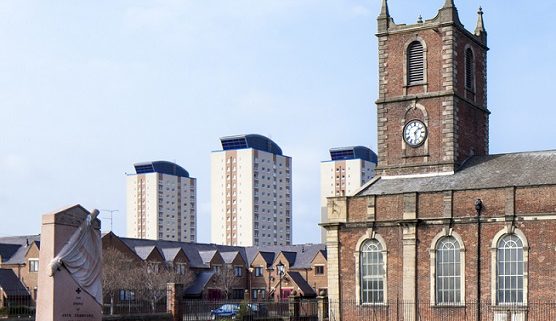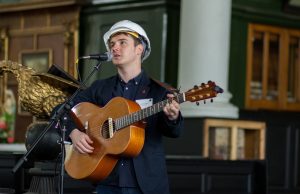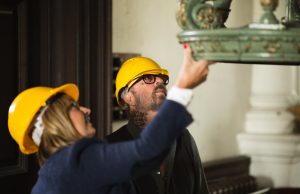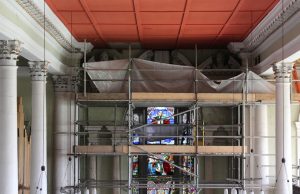Sunderland SOS by Rachel Morley
Holy Trinity in Sunderland is collapsing. It is one of just two Grade I early Georgian churches surviving in the northeast of England. It has been on the Heritage at Risk register for several years and has been nominated as one of the ‘7 Most Endangered’ buildings in Europe.
This church marks an important development in the history of Sunderland, which by the 1700s, was a vibrant and prosperous portal town. In particular, it was notable for its sea coal trade with France and the Netherlands.
This Baroque building was funded by public subscription and, housing, both the council chambers and magistrate’s court, played an important part in civic and spiritual life of Old Sunderland. It was even home to the town’s first public library and fire station.
Old Sunderland, with Holy Trinity at the heart, continued to thrive until the 1840s, when the shipbuilding industry went into decline and the town’s centre moved westwards. Despite this, the population continued to expand due to demand for other trade products and the surrounding merchants’ houses were divided into tenements.
Now, owing to war-time bombing, slum-clearances and peace-time planning, there are but a few historic buildings left in the east end of Sunderland. The church is very close to the city centre, but is cut off by a ring road.
The church was declared redundant in 1988 and came in to the care of the Churches Conservation Trust.
Hendon – the ward in which Holy Trinity is located – is one of the country’s most economically deprived areas. Research suggests vulnerable people, such as young people, lone parents, those with disabilities, mental illness and their carers are particularly at risk of unemployment.
An overview of the issues in our community are as follows:
- 31% are unemployed compared to 7.3% in Sunderland and 12% are claiming Job Seeker’s Allowance, in contrast with 5% in Sunderland and 4% in England.
- Only 5.4% (16-74 year olds) hold a qualification of level 4/5 and 33.3% hold no qualification at all.
- The local area ranks as one of the most deprived for educational attainment.
- Sunderland has the highest suicide rate in the UK and is far above the national average for depression.
- 40% of people on Incapacity Benefit are on these benefits because of mental health problems.
In response to these challenges, we want to transform this building into The Canny Space; an exciting community and cultural venue, which will interpret and tell 300 years of history through engaging, immersive experiences.
The capital work of this project is conservation-led; however we will also sensitively adapt the building so that it can support the needs of a 21st century community and have a sustainable future.
We have secured a grant for a craft skills training programme, which will give people in an area of economic disadvantage life-changing skills.
Several years of consultation have led to this plan. This includes community consultation. We have worked with the Sunderland Young Mums’ Unit and are currently working with poets, musicians and artists from the area’s cultural scene. It is these people who are leading the future of this space.
Most recently, Sunderland-native Dave Stewart, of Eurythmics fame, has joined the project as Creative Director. He believes this building can play a part in the future of Sunderland’s young people.
To make this happen, we first need to rescue this building from the brink. To do this, we have launched an appeal. We need to raise £50,000 to reach our match-funding target for our bid to the Heritage Lottery Fund.
As a Knowledge Quarter partner working throughout 353 sites across England, we would be hugely grateful for any support KQ partners and individuals can offer. To find out more and to donate visit our website.
Rachel Morley is National PR Officer at Knowledge Quarter partner The Churches Conservation Trust.





